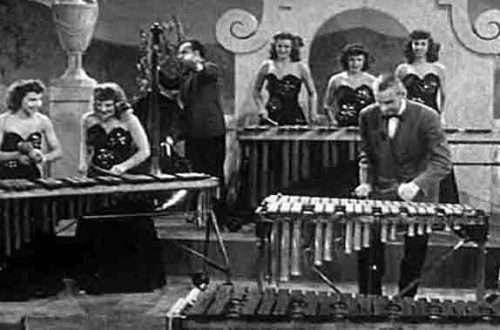The most famous classical music works
Contents
So, our focus today is on the most famous classical musical works. Classical music has been exciting its listeners for several centuries, causing them to experience storms of feelings and emotions. It has long been a part of history and is intertwined with the present with thin threads.
Undoubtedly, in the distant future, classical music will be no less in demand, since such a phenomenon in the musical world cannot lose its relevance and significance.
Name any classical work – it will be worthy of first place in any music chart. But since it is not possible to compare the most famous classical musical works with each other, due to their artistic uniqueness, the opuses named here are presented only as works for reference.
“Moonlight Sonata”
Ludwig van Beethoven
In the summer of 1801, the brilliant work of L.B. was published. Beethoven, who was destined to become famous throughout the world. The title of this work, “Moonlight Sonata,” is known to absolutely everyone, from old to young.
But initially, the work had the title “Almost a Fantasy,” which the author dedicated to his young student, his beloved Juliet Guicciardi. And the name by which it is known to this day was invented by the music critic and poet Ludwig Relstab after the death of L.V. Beethoven. This work is one of the composer’s most famous musical works.
By the way, an excellent collection of classical music is represented by publications of the newspaper “Komsomolskaya Pravda” – compact books with discs for listening to music. You can read about the composer and listen to his music – very convenient! We recommend order classical music CDs directly from our page: click the “buy” button and immediately go to the store.
“Turkish March”
Wolfgang Amadeus Mozart
This work is the third movement of Sonata No. 11, it was born in 1783. Initially it was called “Turkish Rondo” and was very popular among Austrian musicians, who later renamed it. The name “Turkish March” was assigned to the work also because it is in tune with the Turkish Janissary orchestras, for which the sound of percussion is very characteristic, which can be seen in the “Turkish March” by V.A. Mozart.
“Ave Maria”
Franz Schubert
The composer himself wrote this work for the poem “The Virgin of the Lake” by W. Scott, or rather for its fragment, and did not intend to write such a deeply religious composition for the Church. Some time after the appearance of the work, an unknown musician, inspired by the prayer “Ave Maria,” set its text to the music of the brilliant F. Schubert.
“Fantasia Impromptu”
Frederic Chopin
F. Chopin, the genius of the Romantic period, dedicated this work to his friend. And it was he, Julian Fontana, who disobeyed the author’s instructions and published it in 1855, six years after the composer’s death. F. Chopin believed that his work was similar to the impromptu of I. Moscheles, a student of Beethoven, a famous composer and pianist, which was the reason for the refusal to publish “Fantasia-Impromptus”. However, no one has ever considered this brilliant work to be plagiarism, except the author himself.
“Flight of the Bumblebee”
Nikolai Rimsky-Korsakov
The composer of this work was a fan of Russian folklore – he was interested in fairy tales. This led to the creation of the opera “The Tale of Tsar Saltan” based on the story by A.S. Pushkin. Part of this opera is the interlude “Flight of the Bumblebee”. Masterfully, incredibly vividly and brilliantly, N.A. imitated the flight sounds of this insect in the work. Rimsky-Korsakov.
«Capris №24»
Niccolo Paganini
Initially, the author composed all his caprices solely to improve and hone his violin playing skills. Ultimately, they brought a lot of new and previously unknown things to violin music. And the 24th caprice – the last of the caprices composed by N. Paganini, carries a rapid tarantella with folk intonations, and is also recognized as one of the works ever created for the violin, which has no equal in complexity.
“Vocalise, opus 34, no. 14”
Sergei Vasilyevich Rahmaninov
This work concludes the composer’s 34th opus, which combines fourteen songs written for voice with piano accompaniment. Vocalise, as expected, does not contain words, but is performed on one vowel sound. S.V. Rachmaninov dedicated it to Antonina Nezhdanova, an opera singer. Very often this work is performed on the violin or cello accompanied by piano accompaniment.
“Moonlight”
Claude Debussy
This work was written by the composer under the impression of the lines of a poem by the French poet Paul Verlaine. The title very clearly conveys the softness and touchingness of the melody, which affects the soul of the listener. This popular work by the brilliant composer C. Debussy is heard in 120 films of different generations.
As always, the best music is in our group in contact: http://vk.com/muz_class – Join yourself and invite your friends! Enjoy the music, don’t forget to like and leave comments!
The most famous classical musical works listed above are, of course, not all the worthy creations of the greatest composers of different times. You probably understand that the list simply cannot be stopped. For example, Russian operas or German symphonies are not named. So, what to do? We invite you to share in the comments about a piece of classical music that once greatly impressed you.
And at the end of the article, I suggest listening to the wonderful work of Claude Debussy – “Moonlight” performed by the Cherkassy Chamber Orchestra:



